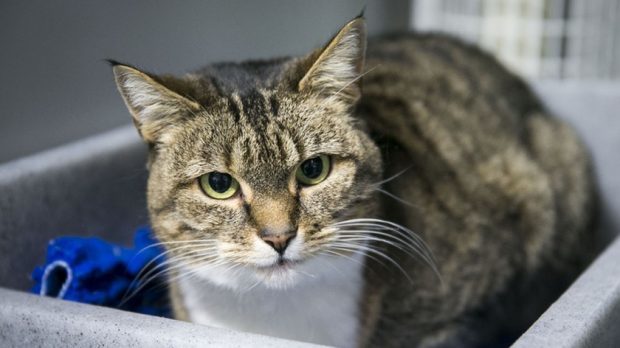Cats can be left or right-pawed, according to new research – and gender appears to play a role.
The small study, from Queen’s University Belfast in Northern Ireland, suggested female cats tend to prefer their right side, while male cats are more likely to be southpaw.
The team says knowing about paw preference could help cat owners understand how their pet deals with stress.
Dr Deborah Wells, of the School of Psychology at Queen’s University Belfast, said: “Beyond mere curiosity, there may be value to knowing the motor preference of one’s pet.
“There is some suggestion that limb preference might be a useful indicator of vulnerability to stress.

“Ambilateral animals with no preference for one side or the other, and those that are more inclined to left-limb dominance, for example, seem more flighty and susceptible to poor welfare than those who lean more heavily towards right limb use.”
The researchers analysed data from 44 cats – 24 male and 20 female – who were all neutered.
The study, conducted in owners’ homes, focused on spontaneous behaviour, such as stepping down the stairs or over objects and showing a side preference while sleeping.
The owners recorded 50 instances of each behaviour over a course of three months.
The cats also took part in what the researchers call a “forced test”, where the felines had to reach for treats inside a three-tiered tower.
The results show that cats overall have no paw preference – unlike humans who are mostly right-handed.
However, the researchers found individual cats did tend to have a dominant paw – distinguished by gender.

Overall, 73% of cats had a paw preference when reaching for food, 70% had put their best paw forward when stepping down the stairs, and 66% demonstrated which limb they preferred when stepping over objects. The cats did not have a left- or right-side preference while sleeping.
The researchers say that while there is further research needed to investigate why there is a gender preference, Dr Wells believes it could be down to hormones.
She added: “The findings point more and more strongly to underlying differences in the neural architecture of male and female animals.
“We have just discovered that left-limbed dogs, for example, are more pessimistic in their outlook than right-limbed dogs.
“From a pet owner’s perspective, it might be useful to know if an animal is left or right limb dominant, as it may help them gauge how vulnerable that individual is to stressful situations.”
The findings are published in the journal Animal Behaviour.
